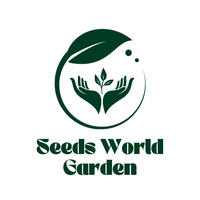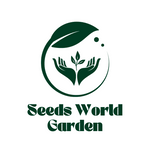Quantity: 35+ Seeds
Color: As picture
Free Shipping and Buy 2 Get 1 Free
1. Bell Pepper Tree is a species of small trees that produce bell pepper fruits. These fruits are rich in vitamins, minerals, and antioxidants, making them a great addition to any diet. The tree is easy to grow and can be grown in a variety of different climates. The fruits can be eaten fresh, cooked, pickled, or frozen, and they have a sweet, mild flavor that pairs well with a variety of dishes.
2. Bell Pepper Tree's fruits are known for their bright, vibrant colors. The color of the fruit can range from yellow to red, and they can also be purple or orange. The fruits are oval-shaped, and they have a thin, crispy skin that can be eaten along with the flesh. The seeds are edible, and they have a mild flavor that makes them great for adding flavor to dishes.
3. Bell Pepper Tree's leaves are large and glossy and have a slightly waxy texture. They are a dark green color and can be eaten raw or cooked. The leaves are also used to make a tea that is believed to have health benefits. The tree also produces a bright yellow-orange flower that has a sweet, pleasant scent.
4. Bell Pepper Tree is a drought-tolerant plant and requires little maintenance. It is also resistant to pests and diseases, making it a great choice for a garden. The tree can be grown in both full sun and partial shade, and it requires regular watering. The fruits can be harvested from late summer to early fall.
5. Bell Pepper Tree is a great choice for gardeners looking to add a unique, colorful plant to their garden. The fruits are nutritious and tasty, and the leaves have a pleasant, earthy flavor. The tree is easy to grow and can be grown in a variety of different climates. The fruits can be eaten fresh, cooked, pickled, or frozen, and they can add flavor to a variety of dishes.
How to Grow Your :
1. Soak in water for 24 to 48 hours before you t them. This allows moisture to penetrate the coat and leads to swelling of the ’s parts to spur germination.
2. Find a location with well-drained, organic-rich, sandy or silt loam and with a minimum average temperature of about 60 degrees Fahrenheit during the t’s early growth. The most favorable temperature range is between 75 to 80 degrees. The t should ideally receive six hours of sun per.
3. Till the soil to rid it of weeds and to increase air circulation. Apply compost to the soil after tilling.
4. Place two or three in a hole about ½ to 1 inch deep in the soil along a fence or under a 6-foot-tall trellis form. The holes should be 15 to 23 inches apart and rows 3 to 5 feet apart.You can also start in small plastic pots in a commercial soil mix.
Shipping:
All orders Free Shipping and Buy 2 Get 1 Free. Normally North American delivery time will take 7-14 days (shipping delays due to large orders will add 1-3 weeks depending on time). Other areas please wait 14-28 days for the order to arrive.
RETURN POLICY
We have a 30-day return policy, which means you have 30 days after receiving your item to request a return.


